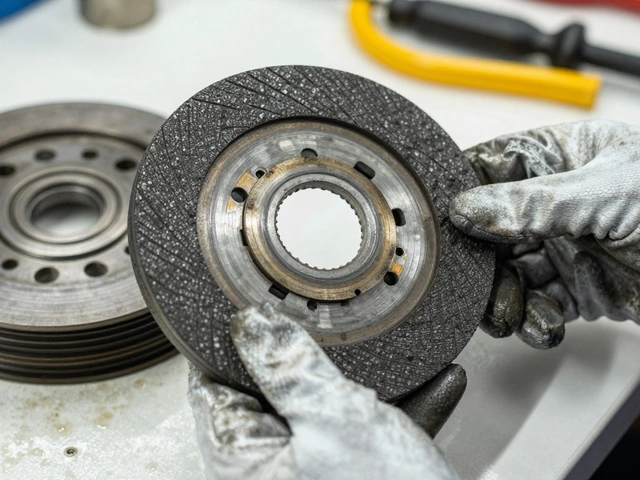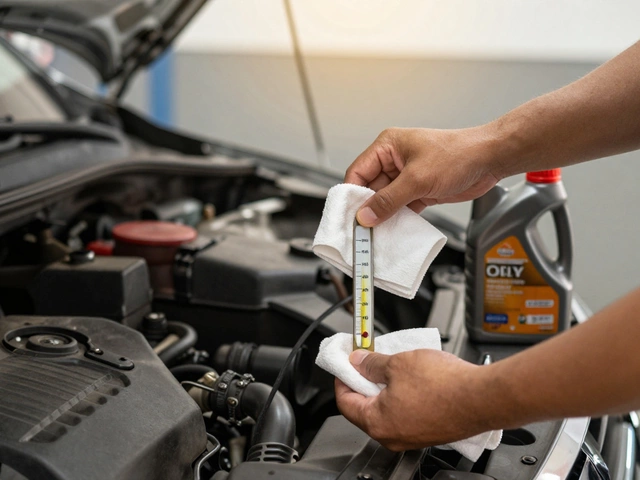Imagine you’re rolling down the highway—music up, windows down—and you hit a bump that feels more like a crater. The car bounces, sways, maybe even rattles a bit more than it used to. You think, “Is this just bad pavement, or are my shocks giving up?” Here’s the cold truth: bad shocks creep up on you slowly, often so gradually that you don’t notice until we’re talking about more than just an uncomfortable ride. You might be wondering if you can get away with it for another few weeks, but the real story is all about how much you’re willing to gamble with safety, control, and your wallet.
What Shocks Really Do: More Than Just Comfort
Shocks aren’t just in charge of keeping your commute smooth. Their main job is keeping your tires in contact with the road. If you’ve ever watched slow-mo videos of car tires after hitting a pothole, you’ll see them bounce up and down like crazy. Your shocks are supposed to keep your tires planted after a bump so you can steer, brake, and accelerate safely. Without them, every bump or dip turns into a small loss of control. Shocks also keep your ride from wallowing during turns and stops—important if you don’t want to feel like you’re driving a boat.
Drive with bad shocks for long enough and you’re not only risking a rougher ride, but also worse traction, longer stopping distances, and potential damage to other suspension parts. Worn shocks let your tires leave the ground even for a split second, which is almost like trying to steer a sled, not a car. Modern cars rely on stable suspension to let their safety systems (ABS, stability control) do their thing. Take away the shocks, and the computers can't save you if your wheels aren’t gripping the road.
Here’s a fun fact: a study by the TÜV Rheinland Group in Germany found that worn shocks increased braking distance by up to 20% at highway speeds. That’s roughly 20 extra feet at 50 mph—about the length of two compact cars slammed together. In an emergency, that’s the difference between a close call and an accident you’ll remember for years.
Your shocks don’t just die overnight. Most quality shock absorbers last between 50,000 and 100,000 miles—if you treat your vehicle gently. If you drive on rough city pavement, haul trailers, or take spirited weekend drives, they’ll wear out faster. Unfortunately, shocks get worse so slowly that your sense of “normal” adjusts with them. By the time you notice, you’re probably way past the safe point.
Here are some signs your shocks might be on their last legs:
- Bouncing several times after driving over a bump
- Uneven tire wear (cupping or scalloping)
- Longer stopping distances
- Nose dives when braking or leans in turns
- Greasy shock absorbers (fluid leaks)
- Keeps drifting during lane changes or in crosswinds
If any of those ring a bell, your shocks aren’t just uncomfortable—they’re unsafe.

How Long Can You Actually Drive With Bad Shocks?
Here’s the million-dollar question: how long can you actually get away with driving on bad shocks? The honest answer? It really depends. Is it weeks, months, a couple of years? In theory, a car will still move even if all four shocks are blown, but that’s a technicality—rolling down the road is very different from actually driving safely.
The moment shocks start leaking or lose damping power, your ride quality goes down first. Maybe you ignore it, chalking it up to “old car life.” Eventually, you start hearing clunks or rattles, the car nose-dives when braking, and turns get spongy. Every mile you drive adds wear not only to the rest of your suspension, but also to tires, ball joints, wheel bearings, and even bushings. Think of it as a domino effect: one weak spot stresses everything around it. If you’ve got bad shocks up front, they’ll make bends and emergency stops riskier. If the rears are shot, the car can sway or bounce, which is just begging for trouble at highway speeds or with a loaded trunk.
There’s no “magic number” of miles you can safely rack up on bad shocks. You could limp along for 5,000 miles if you’re lucky, but damage tends to snowball fast in harsh conditions. If you’re hauling heavy loads or running over potholes often, your shocks can go from “borderline” to “totally destroyed” fast. And if your commute involves wet or hilly roads, that loss of control ramps up the risk factor.
Here’s a quick comparison:
| Condition | Good Shocks | Bad Shocks |
|---|---|---|
| Highway Braking (60–0 mph) | 130 ft | 155+ ft |
| Bump Recovery | 1–2 oscillations | 4+ oscillations |
| Tire Wear (expected life) | 40,000 miles | 20,000–25,000 miles |
| Suspension part stress | Normal | High—risk of premature failure |
If you’re determined to hold out, remember this: insurance claims can get dicey if it turns out your car’s unsafe due to neglected maintenance. Some providers have even denied payouts when inspectors found blown shocks after a wreck. You’re not just risking wear and tear—you’re rolling the dice with liability, too.
People often ask if you can “nurse it along” for a while. Say you have a short commute, nice roads, and you don’t push the car hard—sure, you might limp for weeks without a disaster. But every extra day, the chance of something going wrong creeps up. And your repair bill grows, since letting bad shocks go can chew up not just tires but steering and even brake components. It’s not just about being uncomfortable—it actually costs you more in the long run.
If you’re driving with passengers or hauling precious cargo, it isn’t a question of “if” you should fix it, but “how soon.” Remember: your stopping distance is already longer than everyone else’s, and you’ve got way less margin for mistakes.

Tips, Myths, and What to Do Next
First off, don’t trust every “bounce test” video floating around online. Bouncing the bumper is a rough first check, but it can miss slow leaks or internal damage. The best bet? Get a good look underneath. If you see stains or oily residue on your shock absorbers, that’s a red flag. Another tip: listen for new noises, like clunking over potholes, or pay attention if your car seems to float and wiggle more on highway ramps or gusty days. Sometimes, subtle changes are signs your car is quietly begging for help.
One persistent myth: you can just keep rolling until your shock “totally fails.” Truth is, most shocks never break in an obvious way—they just fade, soaking up less and less until they’re useless, all while your braking and handling gradually worsen. That’s what makes bad shocks so sneaky. By the time your ride feels “rough,” you may already be in the danger zone. I’ve talked to folks who changed their shocks after 90,000 miles and were shocked by how taut and sharp their car felt again. Nothing like a fresh set of shocks to remind you what you’ve been missing.
Replacement doesn’t have to mean dealership sticker shock. Plenty of quality aftermarket shocks last for years, and a good mechanic will check your entire suspension so you catch worn bushings or mounts at the same time. If you’re a DIY type, all it takes is some basic tools and a safe way to get the car in the air. Just remember to do both sides at once—changing one shock only will make your handling unpredictable.
Want your new shocks to last? Rotate your tires, stay on top of tire pressure, and avoid carrying more weight than you need to. Potholes and speed bumps at low speeds are less likely to chew up new parts, too. If you’re in a snowy climate, wash road salt from under your car so it doesn’t rot the shocks and springs.
Here’s a list of tips for anyone pushing their luck with tired shocks:
- Track how your car feels over time—sudden changes in ride usually mean it’s time to act.
- Look for leaks on the shocks every oil change—the smallest drip adds up.
- If you hear clunking or see the car sit lower than normal, stop driving until you troubleshoot.
- Don’t skip alignment after new shocks—it keeps everything wearing evenly.
- If you have active or electronic shocks, get a pro diagnosis; sometimes sensors fail before the actual damper.
Bad shocks aren’t just a nuisance. They’re an invisible risk that gets worse with every mile, shaving away at your comfort, your car’s health, and, if you’re really unlucky, your safety. Can you drive with bad shocks? Probably, for a while. Should you? Not unless you like surprises—the kind that usually cost more than a new set of shocks in the first place.








